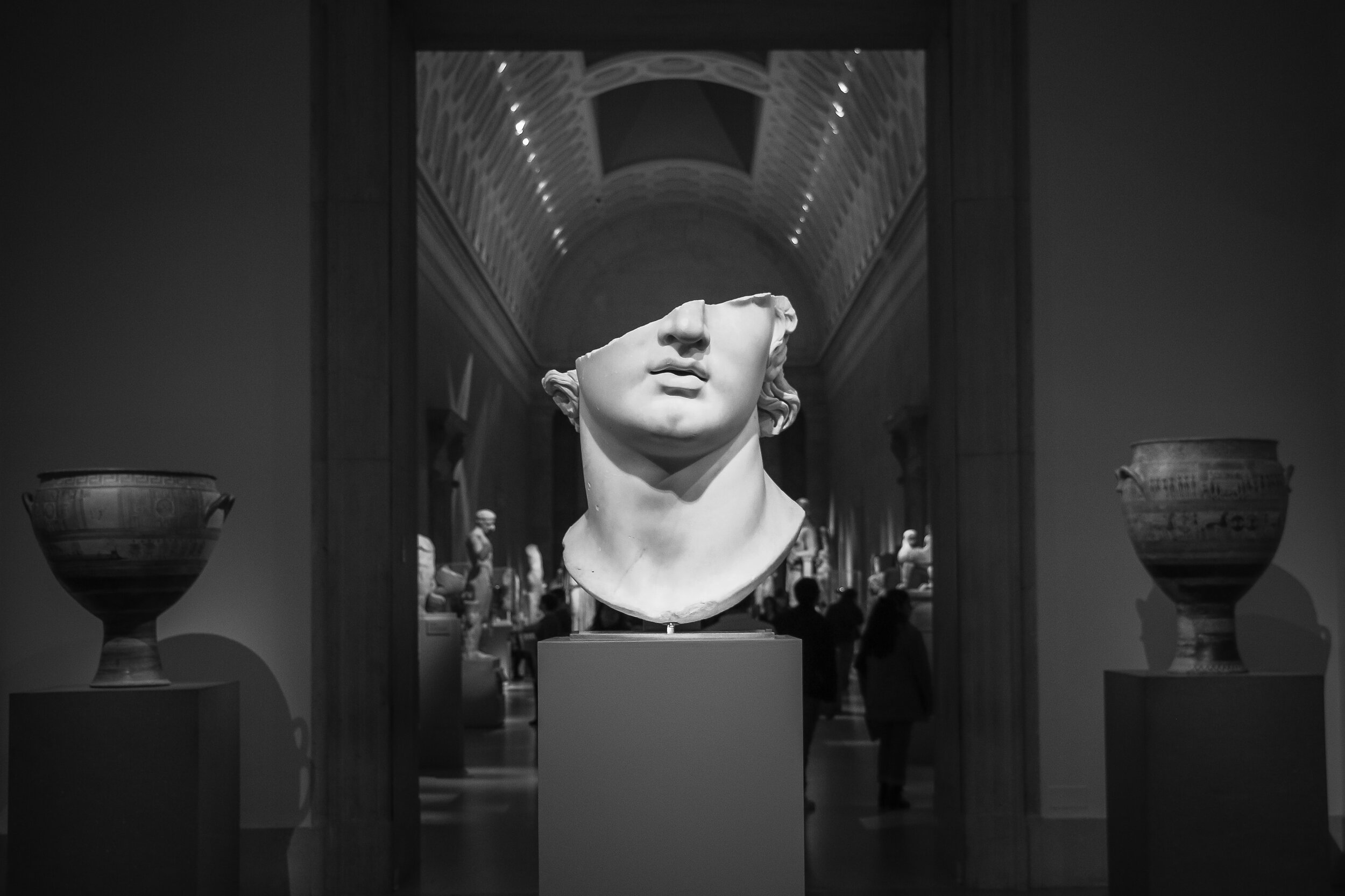Defining The Met’s digital strategy
What does it mean to be a museum in the digital age? As new technologies, opportunities, and challenges emerge at an accelerating pace, and in an age where digital is critical to how cultural institutions build relevance and participate in society, The Met asked itself: how can use digital effectively to achieve its mission?
Paradigm shifting at a century-old institution
Transitioning the institution to better recognize, support, and strategically align this collective responsibility required a paradigm shift on how the museum defined success. In changing how we measure success, we are changing how we think what a museum is. The Met is not just a place you visit, it’s a service to an audience all around the world. How can we disseminate that knowledge to people around the world and how do we hold ourselves accountable for doing so?

The future of the museum experience
We created a strategy framework that follows two mutually-supportive paths that helps ensure The Met simultaneously protects and grows its core leadership position as one of the foremost cultural venues in the world, while simultaneously capitalizing on new growth opportunities in the digital space to fulfill the museum mission on a global scale.
Path 1 // Visit
Support and grow the museum’s Core activity related to a visit to one of The Met’s physical venues in NYC.
Path 2 // Virtual
Fulfill The Met’s mission online as an encyclopedic collection relevant to a global audience and be a catalyst for cultural dialogue.
It was important for us to develop principles that we could adhere to and help inspire our teams. They help us align under a set of shared values that are agnostic of ourselves and put audiences and the mission at the center.
Audience-Centered, mission driven: our audiences and the Museum's mission are at the heart of everything we do.
Data-informed with a human focus: We make data-driven decisions to support building a deeper understanding of our audiences and of the impact of our work.
Incremental value towards long-term vision: we believe in delivering value incrementally, yet prioritize solutions that can grow and scale over time.
Accessible, relevant experiences: we believe diverse historical and contemporary narratives and multiple perspectives make art accessible, inspirational, and relevant for the world.
Guiding principles
From strategy to implementation
Museums have always been spaces of convening for makers, creators, artists and knowledge. How does digital contribute to the museum of the future?
Our goal is to create a space for virtual convening where education, digital and community come together — accessible for everyone.
We organized our work in three strategic areas to bring the museum into the future: creating access to art, expanding education beyond museum walls and generating revenue.
Path 1 products and content
All existing and new product ideas were measured against the path 1 vision, objectives and goals. We wanted to ensure that all KPI’s for each product led up to the goals and each test, iteration and enhancement was a progressive journey towards achieving them.
Since my arrival with a cross functional, collaborative effort, we’ve launched new products and made many improvements to streamline the visit planning experience.
We began with a redesign of The Met’s homepage (+21% traffic to tickets page, -4.3% bounce rate and +18% NPS score), admissions ticketing page (+10% web revenue and +20% add-on revenue) membership PDP (+45.8% conversion rate, +$30 AOV), a new calendar of events, and improved IA for the navigation (+4.7% CTR and +47% product revenue).
We also launched a new product, Webby finalist, The Met Primer focusing on storytelling experience blending multiple media formats and immersive interactive design (+186% unique page views since its launch on April 2019 and 22% of total traffic).
Successfully designed and launched new video series, Met Stories, in partnership with content that garnered 1.6M views across all channels.
Path 2 products, content and partnerships
For path 2, we focused our efforts on reach and creating access to The Met’s Collection that spans 5,000 years of art and over 1.5M artworks. In 2018, a new public API for the collection was launched of all CCO data and images. The API is central to scale the success of our partnerships as a core component of The Met's digital program. The API is the pipeline to new partnerships and audiences and drove our success through multiple platforms.
We continued iterative improvements on The Met’s highest trafficked pages that included the artwork page, Timeline of Art History and creating new content publishing strategy for all of The Met’s content online.
Harnessing emerging technologies for transformative experiences.
We want to play an authentic role in experiencing and learning, onsite or remotely. Our goal is to drive engagement through revealing ‘hidden’ context or visuals, interconnected or untold stories. Our approach was in nimble solutions and experiments, and we wanted to focus in liberating the in-gallery experience by create connection with art.
Measuring our success
Since this digital strategy was established in 2018, we’ve been able to measure the success of our products, initiatives and partnerships based on the existing goals. As we continue to grow and evolve from here, we’re taking a look at these goals and seeing how we can evolve them for more targeted impact.
As of April 2020
What’s next
Success in this role meant collaboration across our cross functional teams, the centralized brand team, as well as engagement with stakeholders across the institution. Design Thinking played a unilateral role in bringing audiences to the forefront and it allowed me personally to help shape the digital strategy for our audiences first.
This strategy, vision and tactics helped us be prepared for the future of the museum and the work has just begun.









